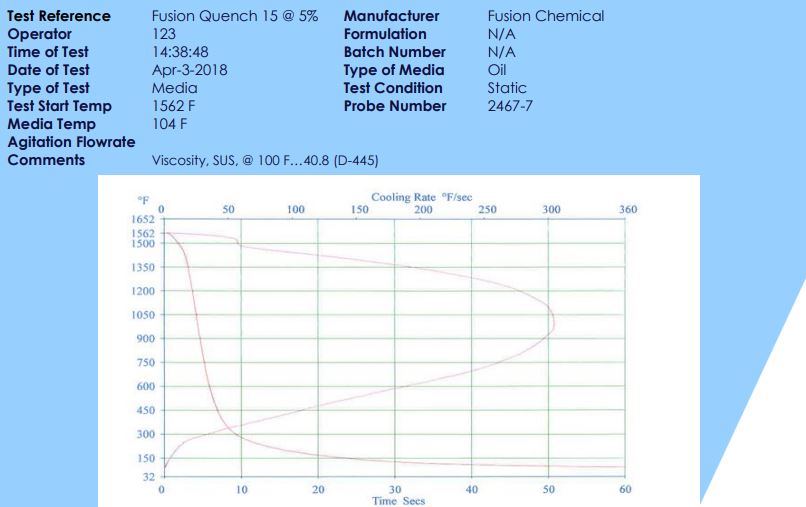Quenching oil is a premium oil specifically formulated for the heat treatment process of various metals. The heating and cooling process plays an integral role in modifying metal properties, including their strength, hardness, toughness, and more.
Why is Quenching Oil Used For Metalworking
Multiple products are available for the quenching process, but oil and water are utilized as the most common solutions. While there are pros and cons to quenching in oil and water, oil is the preferred solution for achieving desired outcomes within the metalworking industry.
A key benefit to quenching in oil is its ability to transfer heat more quickly, minimizing the possibility of distortions that more commonly occur with other quenching solutions. Cooling metals too quickly can result in cracking or distortion, so proper quenching strikes a balance of cooling rate and product integrity. Quenching oil allows for a more “rapid cooling” process while producing a more uniform outcome.
What is Quenching Oil Made of
Formulating quenching oils involves a unique chemistry-based skill set that is typically a proprietary process. To help the end user understand which oil is right for them, quenching oils are commonly characterized based on their physical properties.

Properties are used to evaluate which type of quenching oil will provide the best solution for your metalworking needs. They are typically broken down into primary and secondary properties. A list of features are commonly listed to provide insight into additional benefits based on the metalworking process involved.
Primary Properties
Cooling Rate / Quenching Speed
This rate is typically reflected as a ratio comparing the speed of the product to water or based on a GM quantometer test which measures the cooling of a nickel ball to the point it becomes magnetic.
Thermal Conductivity
The measurement of the oil’s ability to transfer heat. Metals will cool faster in quenching oils that have higher thermal conductivity. Conversely, lower thermal conductivity results in slower cooling.
Viscosity
This is the most important element in determining the ideal quenching oil needed. The viscosity property is measured in centistokes (cSt) and is directly tied to the amount of heat transfer that occurs during the final quenching stage.
Water Content
Too much water in a specific quenching oil can create deformities in the metal, such as soft spots, uneven hardness, etc. Because water isn’t compatible with oil, it can create its own properties during the quenching process. Quench oils should measure water content at a level of 0.1% or below.
Sludge Content
The amount of sludge produced during the quenching process may result in non-uniform heat transfer, distortion, or cracking, as well as cause excessive foaming, resulting in overheating and even fires. The amount of sludge produced by a particular oil is described as a precipitation number used to estimate the remaining life of used oil compared to the levels found in new oil.
Secondary Properties
Operating Temperature
A range of temperatures this oil was designed to operate within.
Pour Point
This is the lowest temperature at which the quenching oil flows and is important in preventing pumping damage.
Flash Point
The flash point is the temperature at which the quenching oil produces the vapor needed to form an ignitable mixture in air near the surface. Igniting the material is easier at a lower flash point. The minimum flash point typically falls at 160 degrees above the oil temperature being used.
Features
Biodegradable
Most important to high-volume operations, this information details the ability of the fluid to decompose or break down safely.
Low Foaming
Foaming can reduce the quenching oils’ cooling ability. Additives allow for ideal, low-foaming solutions.
Water Displacement
Understanding the oils’ ability to displace water from the surface is another important feature of the product being used. Fluids with low surface energy are able to flow under the water or other moisture produced on the surface.
How Quenching Oil Works
Quenching oil provides a hardening of the metal by allowing for a more controlled transfer of heat during the quenching process. They also enhance the wetness of the metal, which helps minimize the distortion that commonly occurs when the material is cooled too quickly. The cooling process occurs in three stages: Film Boiling or Vapor Stage, Boiling Stage, and Convective Heat Transfer Stage.
Vapor Stage
The first stage of quenching involves submerging the material into the oil, and enveloping the product in a vapor blanket. The ability of the metal to harden in this stage correlates with the stability of the vapor layer, which varies based on the type of quenching oil being used. The goal is to make the vapor stage as short as possible in order to prevent soft spots from forming.
Boiling Stage
Heat transfer occurs more rapidly in the boiling stage as the vapor starts to dissipate. The desired boiling point of this stage will is determined by the specific properties of the quenching oil in use, along with the rate of heat transferred. Fusion produces oils specifically formulated for more rapid cooling in this stage of the process.
Convective Stage
The final stage occurs when the material temperature drops below the boiling point of the oil used. Oil viscosity is directly related to the heat transfer that occurs during this stage, with a lower viscosity quenching oil resulting in an increased heat transfer rate and a higher viscosity oil yielding a lower rate.
How a specific quenching oil reacts during this process is commonly displayed in a rate curve.

Conclusion
The quenching process is one of the key pieces to proper metalworking. Understanding how certain types of metal react and the user’s desired end result are key components of choosing the right product. Doing so will also ensure the quench process is done properly.

